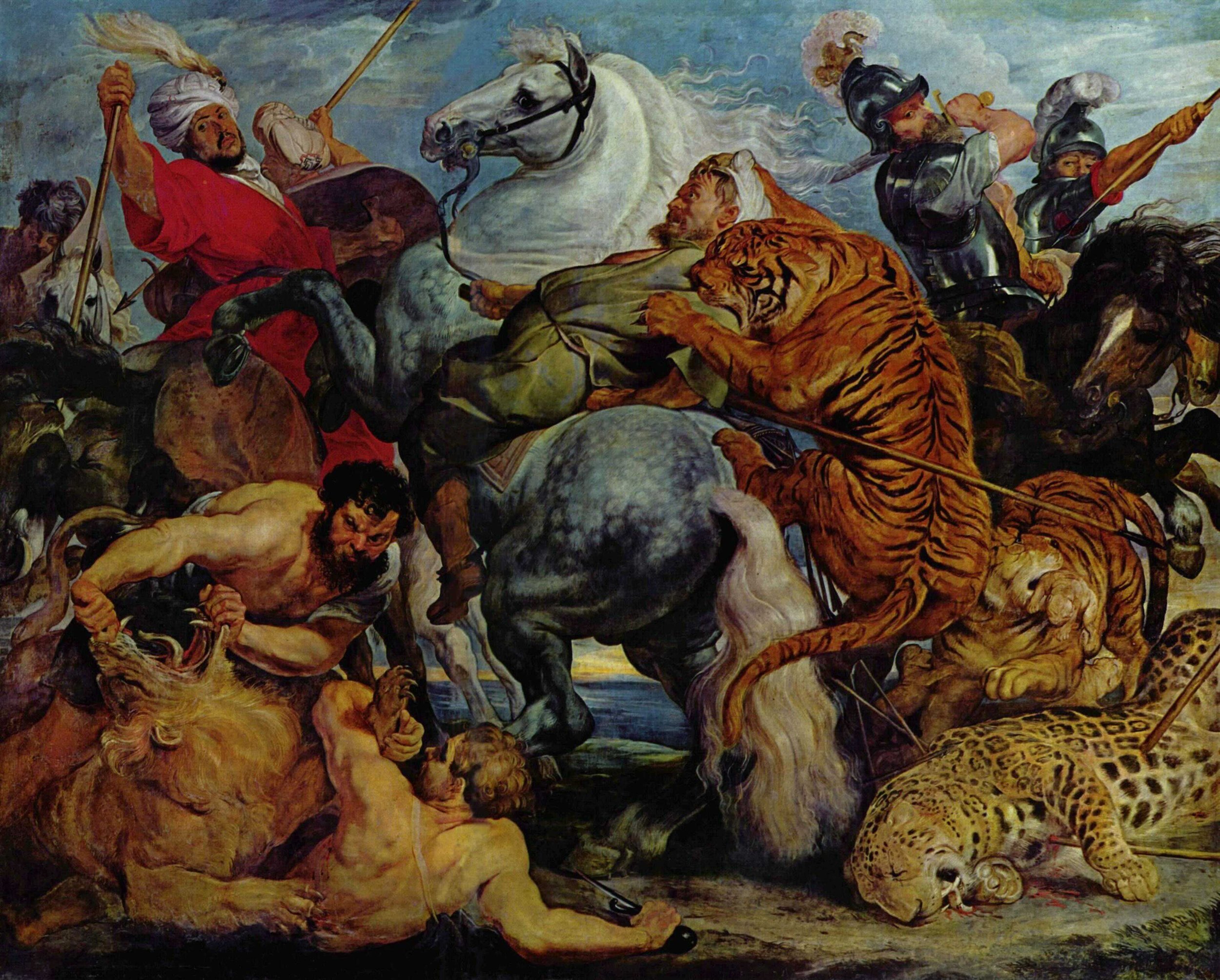Lunar New Year 2022: Tigers In Art History
Tiger by Maruyama Okyo
Lunar New Year is just around the corner, and 2022 marks the Year of the Tiger. Known as the king of all beasts in the Asian zodiac, the Tiger represents strength and bravery. People born in the Year of the Tiger are described as vigorous, courageous, and independent.
Celebrated by billions of people, Lunar New Year is one of the world’s largest holidays. And this year major brands are, naturally, jumping to release tiger-themed merch. Prada is selling a $1,875 jacket with a tiger print and Moschino has a capsule collection repurposing everyone’s favorite breakfast companion Tony the Tiger. Recently, Gucci even ran into some controversy when they used actual tigers for their Lunar New Year shoot.
Long before luxury labels tried to outdo one another with the most outlandish stripes, artists incorporated tigers into their work in much more subtle ways. Their presence varies, ranging from regal and elegant to a menacing threat approaching in the distance.
In celebration of the Year of the Tiger, take a look at a few of our favorite paintings of tigers from across art history.
The Tiger Hunt by Peter Paul Rubens (1615 or 1616)
On display at Musée des Beaux-arts de Rennes, “The Tiger Hunt” is an oil painting depicting a dramatic showdown between man versus beast. As a baroque work, it features a heightened theatricality and evokes the theme of man’s hubristic attempt to civilize. Along with the cheetahs and lions, the tigers in this work symbolize a struggle to tame and conquer. Speaking of artworks about ego and hubris, “The Tiger Hunt” was featured in a promotional poster for HBO’s hit TV drama Succession back in 2018.
🐅 Tiger Vibe For Your New Year: You’re feeling defiant and outrageous — nothing can hold you back and we are low key kind of scared of whoever stands in your way. But be careful, you will need some back up.
Tiger In A Tropical Storm (Surprised)! by Henri Rousseau (1891)
The oil on canvas painting features a tiger in a jungle, searching for its prey in the midst of wind, rain, and lightning. Stored in the National Gallery in London, “Tiger In A Tropical Storm (Surprised!)” is largely remembered as Rousseau’s most iconic work. What’s particularly interesting about this work is its ambiguity. There’s no prey depicted, leaving us with the task of figuring out what — or who — is being hunted.
🐅 Tiger Vibe For Your New Year: You’re a girl-boss in the wild, ready to pounce on some prey who has just been CC’d.
A Younger Tiger Playing With Its Mother by Eugène Delacroix (1831)
Even though he supposedly never saw one in the wild, tigers were a recurring motif in French artist Eugène Delacroix’s oeuvre. While some believe that his tigers are based off of him observing them in the Jardin des Plantes zoo in Paris, others think that his cat was his principal muse and source for inspiration. “A Younger Tiger Playing With Its Mother” depicts four-legged creatures as cuddly and charming rather than aggressive and menacing. A mother and child are playing beneath a gloomy sky, emulating a human-like familiarity.
🐅 Tiger Vibe For Your New Year: Maybe you will just chill out and relish in your surroundings — drink a soothing kombucha, go to a barn upstate, and enjoy the sunshine (that sort of thing).
Old Tiger In The Snow by Katsushika Hokusai (1849)
The 19th century Japanese artist is attributed to transforming and elevating Ukiyo-e — the genre of Japanese woodblock prints and painting that depicts ethereal, sensual pleasures from the “floating worlds” of the Edo Period. In his paintings, he uses Ukiyo-e sensibilities to portray natural subjects such as scenic vistas and animals. Though he’s most known for the iconic “Great Wave” painting, his later work “Old Tiger In The Snow” is equally as intriguing. The hanging scroll painting portrays a tiger floating through a landscape, making its way towards snow-covered bamboo leaves which emulate claws. Since Hokusai painted “Old Tiger In The Snow” in the year leading up to his passing, it can be viewed as autobiographical with the aged beast standing in for the painter grappling with notions of death and the afterlife.
🐅 Tiger Vibe For Your New Year: Solemn, contemplative, and retrospective. You will finish up that chapbook of poetry that’s been languishing as a Google Doc for way too long!





